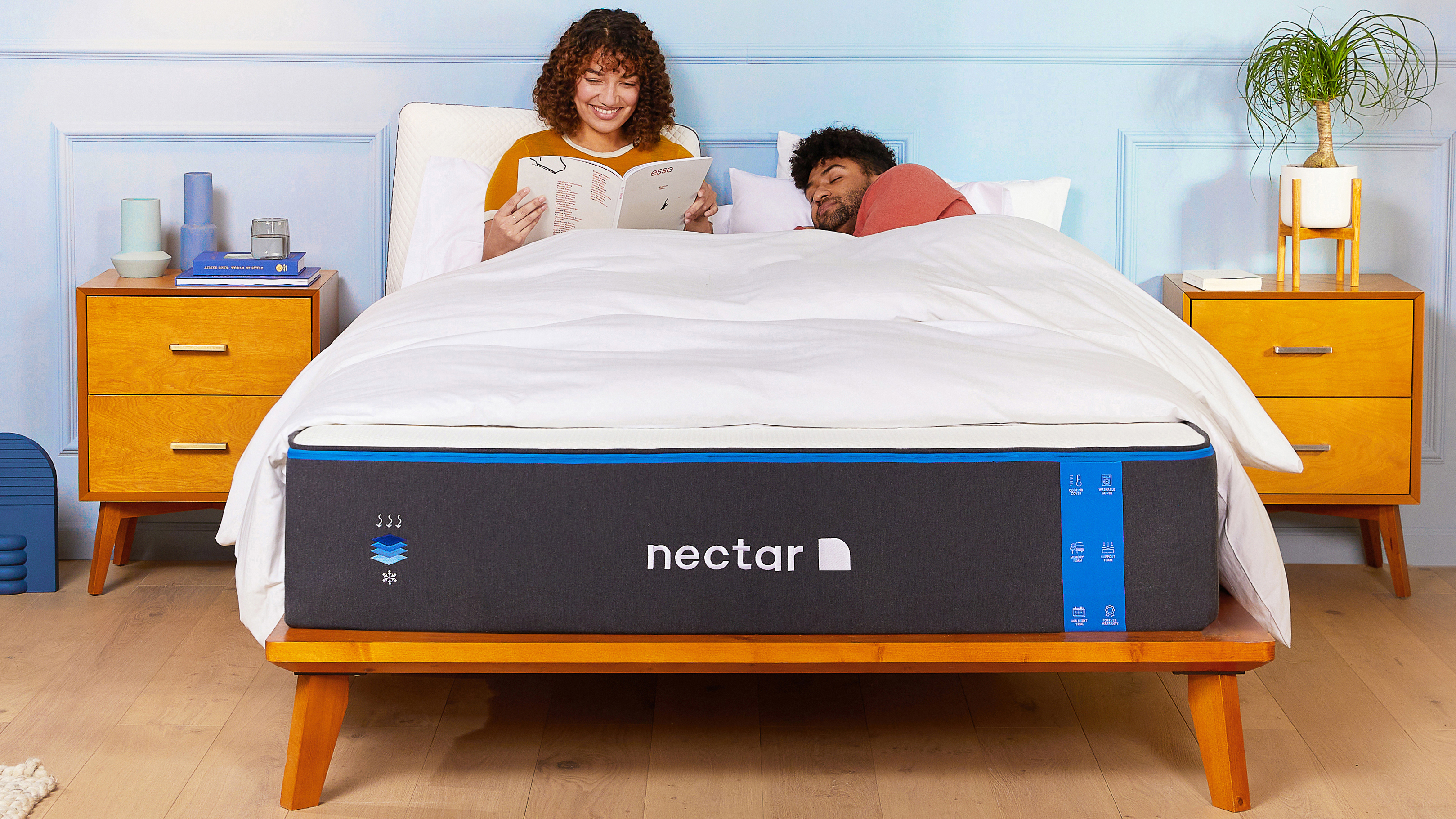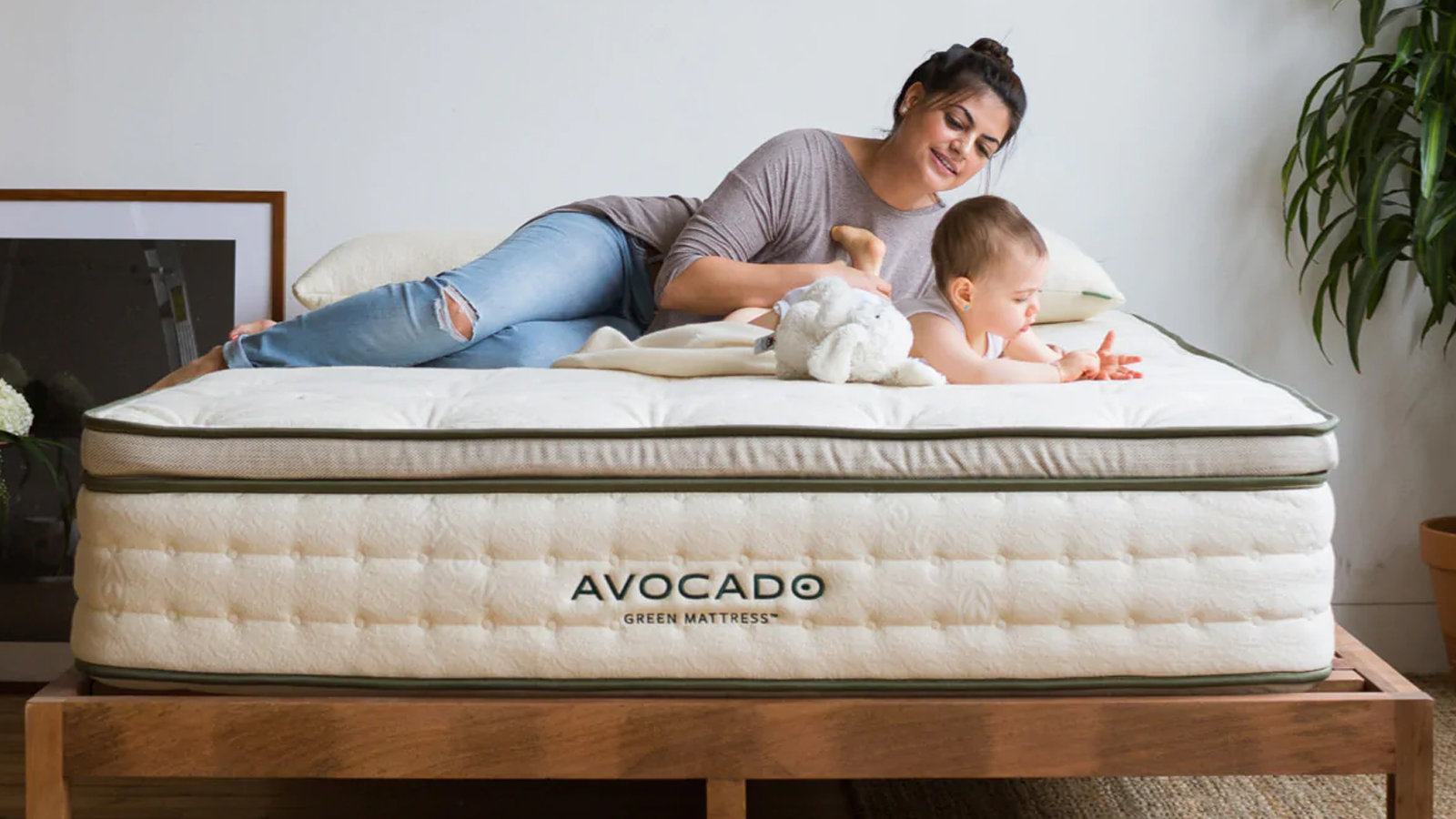
Memory foam and latex have become popular materials for creating high-quality mattresses but for different reasons. While both can provide excellent comfort and pressure relief, there are some key differences between memory foam vs latex mattresses, especially in terms of price, support, and sustainability.
When shopping for a new mattress, you're bound to come across memory foam and latex as they're both found in some of the best mattresses on the market. But how do you decide between a memory foam vs latex mattress? In this memory foam vs latex comparison guide, we'll take a look at both materials, discuss their pros and cons and help you decide which material is right for your sleep.
Plus, as many sleep brands extend their Presidents' Day mattress sales, we've rounded up some of the best deals on memory foam and latex mattresses, so you can pick up a bargain while the sales are still live.
Memory foam vs latex: An overview
Mattresses made from memory foam tend to be soft and comfortable and, since the 1990s, have become a staple in the bed industry. Memory foam is a type of polyurethane foam that has been mixed with additives. Once the mixture forms a chemical reaction, a blowing agent is added to make it expand into foam. These additives mean that the foam can contour to your body's shape, so your shape will be indented into the mattress when you get up.
Latex, on the other hand, has a more sustainable, natural production method. While the process can vary depending on whether it is Dunlop or Talalay latex, it basically involves mixing sap from the rubber tree with non-toxic materials which are then mixed into a froth and baked. The result is a material that's durable, breathable, non-toxic, and found in some of the best organic mattresses.
Memory foam vs latex in mattresses: Key differences

While both popular mattress materials, memory foam and latex are very different. Firstly, latex falls into two categories: Dunlop latex vs Talalay latex. Dunlop latex is denser and has a more supportive, firmer feel that is quite bottom-heavy, whereas Talalay latex is much softer and cushioning. However, the best memory foam mattresses tend to be plusher and provides more body-hugging pressure relief and sink-in softness.
Memory foam also tends to sleep warmer than latex, as memory foam uses body heat and weight to contour to the sleeper's shape. Meanwhile, latex is much more breathable (with Talalay being slightly more breathable thanks to its more porous make-up) and cooling.
Another key difference is sustainability and cleanliness. Latex is organic, hypoallergenic, antimicrobial, and dust mite resistant, so it's one of the best materials for a clean, eco-friendly sleep. It's also more durable than memory foam, with a memory foam mattress lasting 10 years on average, while a latex mattress can last up to 20 years.
However, memory foam is slow-moving, which means it’s great at absorbing movements and limiting motion transfer. This motion isolation means memory foam beds tend to be the best for couples who don’t want to feel their restless partner’s movements on their own side of the bed. Latex, on the other hand, can be buoyant which can lead to some motion transfer
Memory foam vs latex in mattresses: Brands and prices
While the above differences are important, the most standout difference between memory foam and latex is price. While there is a price difference between Dunlop and Talalay, latex mattresses on the whole are incredibly expensive due to their quality, durability, and eco-friendliness. Latex is usually found in beds by eco-luxury mattress brands, such as Avocado, Turmerry, Awara, and Birch Living. The most affordable latex beds tend to have a starting MSRP of over $1,000, while luxury latex beds can have a starting MSRP of over $2,000.
Memory foam mattresses, on the other hand, can be incredibly affordable and are found in most of the best cheap mattresses on the market. Many top-rated brands' signature best-value beds are memory foam mattresses, and the starting MSRP can be as low as under $200.

Memory foam vs latex in mattresses: pros and cons
The pros of a memory foam mattress:
They're great for cushioning pressure relief. If you sleep on your side or you have a lightweight body, memory foam provides that sink-in soft surface that cushions and soothes pressure points in the shoulders hips and knees.
They're usually affordable. Many brands have a best-value, signature bed, and that bed is usually a memory foam mattress. They're a lot cheaper than hybrid mattresses and latex mattresses, and are easily accessible, too.
They have low motion transfer: Memory foam is excellent at limiting motion transfer, which means restless bed-sharers won't be disturbed by each other's movements.
The cons of a memory foam mattress:
They can trap heat. Memory foam is notorious for sleeping warm, as it absorbs heat in order to mould to your body's shape.
They lack support for some bodies. Memory foam mattresses tend to be sink-in soft, which can pose some problems for stomach sleepers and those with heavy bodies. The soft surface can cause the hips of front, back and heavyweight sleepers to sink into the mattress, which then causes spinal misalignment and back pain.
They can feel difficult to move about on. A drawback of this slow-moving, sink-in soft material is that it can be difficult to change positions on if you're a combination or restless sleeper.
The pros of a latex mattress:
They're non-toxic, clean and eco-friendly. Latex is natural and created sustainably, which means the material is great if you're looking for a greener, cleaner sleep.
They're breathable. Latex has natural cooling properties, with Talalay latex being the most breathable thanks to being more porous.
They're long-lasting. Latex beds are high quality and are built to last. The lifespan of a latex bed can be up to 20 years, 10 years more than the lifespans of memory foam and even the best hybrid mattresses.
The cons of a latex mattress:
They're expensive. As they're made from sustainably sourced materials, latex mattresses can have a luxury price tag, with even the most affordable latex beds setting you back over $1,000.
They can lack motion isolation. Latex beds can be quite buoyant, so they're not as great at absorbing movement as memory foam.
They're not as plush. While latex can provide pressure relief, it does not provide the soft traditional, soothing hug of memory foam.
Memory foam vs latex in mattresses: MATTRESSES: WHICH SHOULD YOU BUY?
Buy a memory foam mattress if...
✅ You're on a tight budget: Some of the most affordable beds made by the best bed in a box brands are memory foam mattresses.
✅ You're a side sleeper: Memory foam provides the soft, cushioning pressure relief along the shoulders, hips, and knees.
✅ You share a bed: Memory foam's slow-moving properties are fantastic at absorbing movements and limiting motion transfer.
Buy a latex mattress if...
✅ You want a cleaner, greener sleep: Latex is a natural, non-toxic material which can provide a hypoallergenic, sustainable sleep surface.
✅ You're a hot sleeper: If you overheat at night, latex is naturally breathable, so it can keep you cool while you sleep.
✅ You want a bed that lasts: Latex beds are of high quality, and can last up to 20 years.







